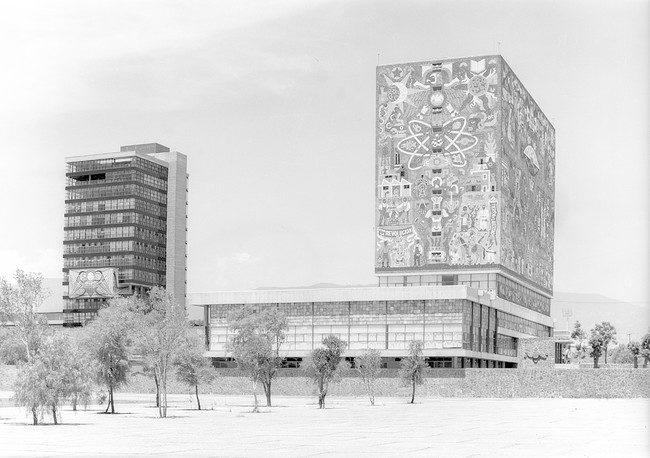One of the challenges facing the Museum of Modern Art (MoMA), as it gathers material for its planned 2015 show of Latin American architecture from 1954 to 1980, is that Mexico alone warrants as much space as MoMA is likely to allot to the entire region. For proof, just visit the Palacio de Iturbide, in the center of Mexico City, where two large floors—some 16,000 square feet of exhibition space—are devoted to the last 110 years of Mexican architecture. The show, Arquitectura en Mexico 1900-2010: La Construccion de la Modernidad obras, diseno, arte y pensamiento [Architecture in Mexico 1900–2010: The Construction of Modernity: Works, Design, Art, and Thought], which runs through June, is a microcosm of its surroundings; it’s hard to imagine a country with more varied architecture than Mexico. The show, curated by the young Mexican architect Fernanda Canales, confronts that diversity head-on, opening with a sectional drawing of the Teatro Nacional (now the Palacio de Bellas Artes), as ornate as anything to come out of l’Ecole des Beaux-Arts, and a stark black-and-white photo by Armando Salas Portugal of 1960s housing blocks by Mario Pani and Luis Ramos Cunningham.
The show, organized chronologically, is educational, but it is also beautiful, thanks in part to a profusion of paintings along with the expected models and drawings. Nowhere in the world is architecture so closely associated with painting. There are paintings on buildings, including Juan O'Gorman's murals for his 1952 Central Library of the National Autonomous University of Mexico, designed with Gustavo Saavedra and Juan Martinez de Velasco. And there are paintings of buildings, including Diego Rivera's astonishing portrait of the studio that O'Gorman designed for him in 1931. There is also a Kahlo represented in the show—a remarkable 1912 photo of the steel structure of French architect Emile Bénard's Palacio Legislativo was taken by Frida’s father, Guillermo.
One great painting, Cuadro futurista de la ciudad de México (1962) by Roberto Montenegro, shows Mexico City of the future, with highways crisscrossing like ribbons, putting a happy face on the city’s congestion.
Less colorful are the black and white photos by Armando Salas Portugal, who could be called the Ezra Stoller of Mexico if such a comparison were necessary, and a larger photo by Tomas Casademunt of Alberto Kalach’s 2007 Jose Vasconcelos Library, an image far more enticing than the building’s somewhat grim reality.
There are also countless architectural models, most of them made specifically for the show, depicting everything from masonry block buildings like the Anahuacalli museum to its opposites, the thin-shell structures of Felix Candela. A model of a cantilevered studio by Augustin Hernandez is so dramatic, one wonders if it could possibly be built (it was, in 1970). Rooms of furniture and household objects give Mexican design a rare moment in the sun. Sculpture is represented, too, including a gridded metal construction (Untitled, 2010) by Teodoro González de León, a prolific architect now in the seventh decade of his career.
The show is a wonderful companion to any tour of Mexico. I was wondering what that huge, swoopy building on the highway was and the answer revealed itself at the exhibition: the National School of Theater by Enrique Norten’s firm, Ten Arquitectos.























Post a comment to this article
Report Abusive Comment